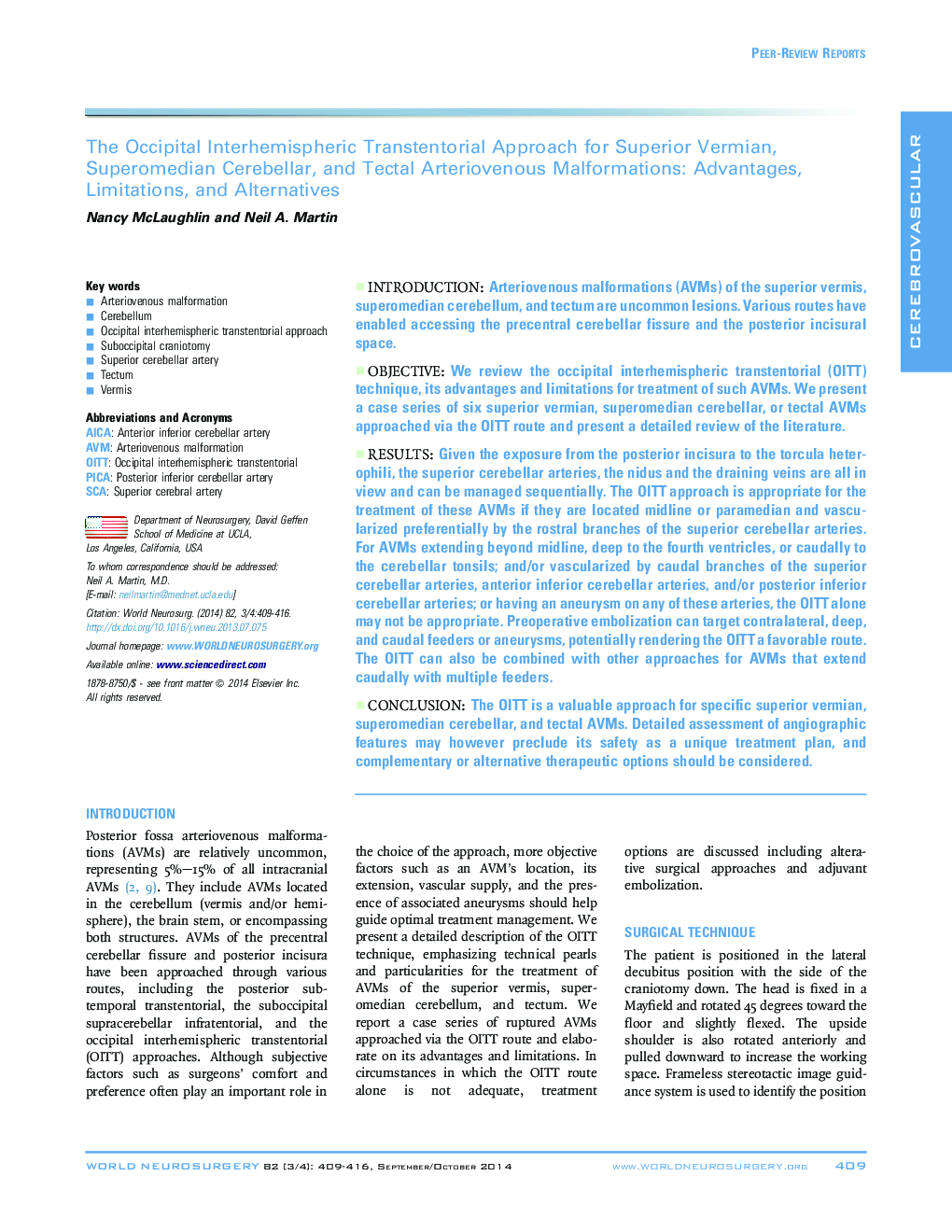| کد مقاله | کد نشریه | سال انتشار | مقاله انگلیسی | نسخه تمام متن |
|---|---|---|---|---|
| 3095446 | 1581471 | 2014 | 8 صفحه PDF | دانلود رایگان |
IntroductionArteriovenous malformations (AVMs) of the superior vermis, superomedian cerebellum, and tectum are uncommon lesions. Various routes have enabled accessing the precentral cerebellar fissure and the posterior incisural space.ObjectiveWe review the occipital interhemispheric transtentorial (OITT) technique, its advantages and limitations for treatment of such AVMs. We present a case series of six superior vermian, superomedian cerebellar, or tectal AVMs approached via the OITT route and present a detailed review of the literature.ResultsGiven the exposure from the posterior incisura to the torcula heterophili, the superior cerebellar arteries, the nidus and the draining veins are all in view and can be managed sequentially. The OITT approach is appropriate for the treatment of these AVMs if they are located midline or paramedian and vascularized preferentially by the rostral branches of the superior cerebellar arteries. For AVMs extending beyond midline, deep to the fourth ventricles, or caudally to the cerebellar tonsils; and/or vascularized by caudal branches of the superior cerebellar arteries, anterior inferior cerebellar arteries, and/or posterior inferior cerebellar arteries; or having an aneurysm on any of these arteries, the OITT alone may not be appropriate. Preoperative embolization can target contralateral, deep, and caudal feeders or aneurysms, potentially rendering the OITT a favorable route. The OITT can also be combined with other approaches for AVMs that extend caudally with multiple feeders.ConclusionThe OITT is a valuable approach for specific superior vermian, superomedian cerebellar, and tectal AVMs. Detailed assessment of angiographic features may however preclude its safety as a unique treatment plan, and complementary or alternative therapeutic options should be considered.
Journal: World Neurosurgery - Volume 82, Issues 3–4, September–October 2014, Pages 409–416
